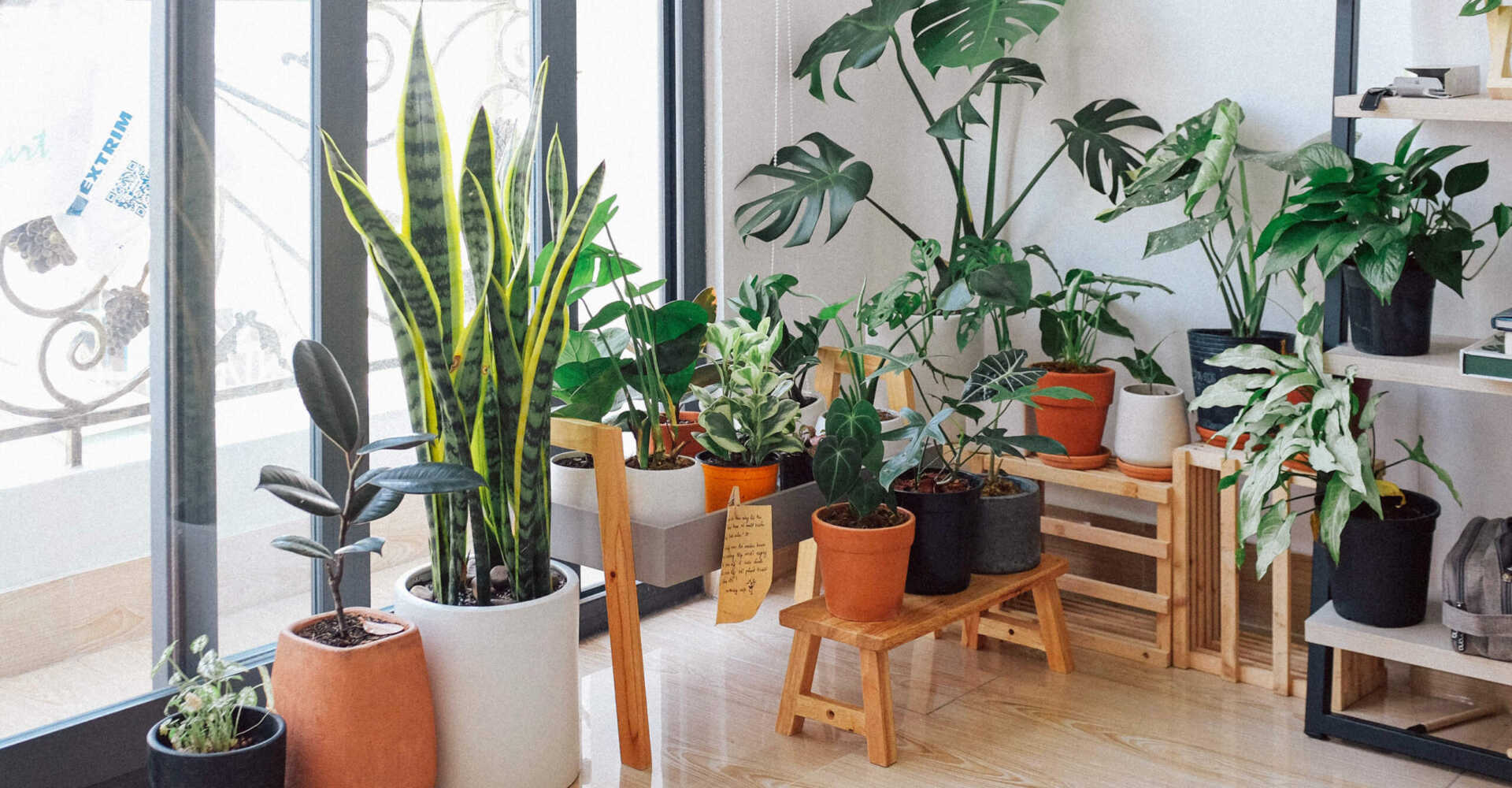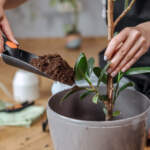
First and foremost, you’ll need to determine a location your new plant: indoors, on the patio, or planted outside in your garden. Your plant’s final location will dictate some aspects of its care.
Here are some important tips and information from our professional care team:
WATERING: Developing proper watering routines is perhaps the hardest thing to learn. Spending a bit of time online researching the watering cycle of your specific plant will be incredibly beneficial. For example, it’s no surprise the watering requirements of Cacti and Succulents are dramatically different than, let’s say, philodendrons. In general, it is better to underwater then to overwater. Overwatering could result in root rot that might compromise your lovely plant. Pay attention to the soil drainage when determining how often to water your plant. Most plants will do well if you only water once the soil is dry to the touch and doesn’t feel cool. For succulents and cacti, you’ll want to leave the soil dry for a while before re-watering.
HUMIDITY: Indoor environments typically lack the humidity essential to many tropical plants. If you place your tropical plant in a “dry air” environment, remember to mist its leaves occasionally to keep them looking their loveliest.
SUN: PlantVine’s interior plants have been shade-grown. When these arrive at your home, be sure to place them where they will receive bright indirect light. Direct sunlight may scorch the plant’s leaves. Inversely, sun grown plants may partially defoliate if kept in shade. The shade houses where they grow are almost always going to provide more sun than inside your home. It’s normal for your plant to lose leaves while it gets used less light (the bigger the difference, the more leaf loss/yellowing will occur). It’s best if you place the plant where it can see the sky initially and slowly move it to its final location.
SELECTING THE RIGHT LOCATION: If you are planning to keep your plant on the patio, make sure you research the lowest temperature it can tolerate. Most of PlantVine’s plants are tropical, and can withstand temperatures down to 40 degrees. If a freeze is imminent, your plant should come indoors.
FERTILIZING: Please do not fertilize your plants upon their arrival, as they need some time to recover from shipping. We recommend fertilizing 2 months after delivery. Be sure to select the proper fertilizer for your specific plant, “Palm” “House Plant”, etc.
SOIL: When you’re ready to transplant your new addition (no sooner than 7 days after its arrival) to a new pot or in the ground, use the proper soil for your specific plant.
SELECTING THE CORRECT POT: If you are planning to keep your plant inside your home or on your patio, choose a pot with a drainage hole at the bottom. This is crucial, as it prevents excess water from building up and causing root rot or other fungal issues.
We hope you enjoy your new plants! Please do not hesitate to contact us with any questions or concerns. Our friendly customer service team is standing by to help.

Glossary of Common Terms
Aeration: The process of introducing air into the soil to improve drainage and allow roots to breathe.
Annual: A plant that completes its life cycle—from germination to the production of seeds—within one growing season, and then dies.
Biennial: A plant that requires two growing seasons to complete its life cycle, typically flowering and producing seeds in the second year before dying.
Bloom: The flowering stage of a plant when it produces blossoms.
Botanical Name: The scientific name of a plant, consisting of the genus and species, used universally to identify a plant.
Companion Planting: The practice of growing different plants together to enhance growth, deter pests, or provide other benefits.
Cutting: A method of plant propagation where a piece of the stem, leaf, or root is cut from the parent plant and encouraged to grow into a new plant.
Dormancy: A period when a plant temporarily stops growing, usually in response to adverse environmental conditions.
Epiphyte: A plant that grows on another plant for physical support but is not parasitic, often found in tropical environments.
Fertilizer: A substance added to soil or plants to supply essential nutrients for growth, typically containing nitrogen (N), phosphorus (P), and potassium (K).
Germination: The process by which a seed develops into a new plant.
Humidity: The amount of moisture in the air, which can affect plant health and growth.
Hydroponics: A method of growing plants without soil, using nutrient-rich water.
Light Intensity: The amount of light received by a plant, crucial for photosynthesis and growth, often categorized as low, medium, or high.
Mulch: A material spread over the surface of the soil to retain moisture, suppress weeds, and regulate temperature.
Node: The part of a plant stem where leaves, branches, or roots grow.
Perennial: A plant that lives for more than two years, typically flowering and producing seeds annually after reaching maturity.
pH Level: A measure of soil acidity or alkalinity, affecting nutrient availability and plant health. A pH of 7 is neutral, below 7 is acidic, and above 7 is alkaline.
Photosynthesis: The process by which plants convert light energy into chemical energy, using carbon dioxide and water to produce oxygen and glucose.
Pruning: The practice of cutting away dead or overgrown branches or stems to encourage healthy growth and improve plant shape.
Repotting: The process of transferring a plant to a larger pot to accommodate its growing roots and provide more nutrients.
Rhizome: A horizontal, underground stem that often produces roots and shoots at its nodes, used by some plants for storage and vegetative reproduction.
Soil Mix: A blend of materials such as peat, compost, perlite, and vermiculite used to create an optimal growing medium for plants.
Succulent: A type of plant with thick, fleshy tissues adapted to store water, often found in arid environments.
Transplanting: The process of moving a plant from one location to another, typically from a pot to the ground or a larger container.
Variegation: The presence of differently colored zones in the leaves, stems, or flowers of a plant, often resulting in a striped or patterned appearance.
Watering Schedule: A planned routine for watering plants, based on their specific needs and environmental conditions.
Xerophyte: A plant adapted to grow in dry conditions, often with special features like thick leaves or deep roots to conserve water.
Zone: A geographic area defined by its climatic conditions, used to determine which plants are suitable for growing in a particular region (commonly referred to as USDA hardiness zones in the United States).
ONLINE: Click here to contact us!
BY PHONE: 888-361-9998


